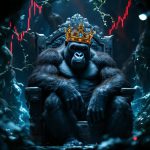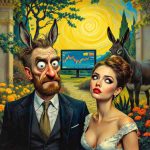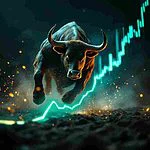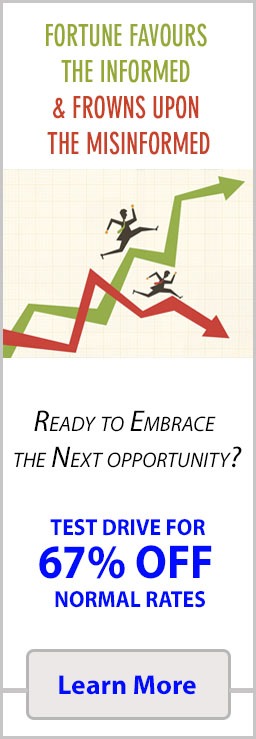
Why Elite Chess Minds Spot Market Crashes First: Strategy for Survival
Updated Aug 25, 2025
Picture a grandmaster fixed on a chessboard, sensing a trap several moves out. Now swap the board for a Bloomberg terminal: an investor scans headlines, charts, and background “noise” for the faint tremors that precede a break. The overlap is striking. The same disciplines that define top-tier chess—pattern recognition, probabilistic thinking, and disciplined skepticism—equip investors to detect credible stock market crash indicators before the crowd even senses danger. Both arenas reward those who question apparent safety, anchor decisions in odds rather than hope, and stay composed when panic surges. The edge isn’t in knee‑jerk speed; it’s in anticipating the cascade by reading what’s between the lines, not just what’s obvious.
Strategic Pattern Recognition: The Psychology of Anticipation
Chess masters live inside patterns. Thousands of studied positions teach them when a “normal” setup suddenly isn’t. That same sensitivity applies to markets: reliable crash indicators—rising volatility, negative momentum divergences, drying liquidity—rarely shout. They flicker in the background until a trained eye connects the dots. Behavioral finance, as Daniel Kahneman showed, warns that humans routinely overweight the familiar and underweight low‑frequency, high‑impact signals—exactly the kind of anomalies that precede regime shifts. Strong players, on a board or in a portfolio, don’t rush a move that looks “too easy.” They pause, reframe, and test the position against hard-earned priors.
In investing, George Soros popularized “reflexivity,” the feedback loop where perceptions move prices and prices reinforce perceptions. He acted when subtle indicators—ignored by consensus—hinted that confidence was about to crack. In chess terms, a quiet knight move can telegraph a far larger plan. Market cues work the same way: an inverted yield curve, narrowing market breadth, or widening high‑yield credit spreads aren’t mere technicalities; they are psychological tremors—aggregated fear, leverage, and positioning made visible.
Grandmasters also read people, not just pieces. They sense overconfidence, time trouble, or hesitation from shifts in tempo. Investors must do the same with the herd: decode positioning and sentiment alongside fundamentals. When the tells align—volatility up while breadth thins, liquidity cushions erode, and credit risk reprices—the strategic mind doesn’t react to the last headline. It prepares for the next sequence, turning volatility from threat into opportunity and timing defense or attack with intent rather than impulse.
Embracing Calculated Risk: Lessons from Both Boards
How do chess masters and top investors use these recognitions in real time? They embrace risk, but only when it’s calculated, not blind. In chess, a sacrifice is made only when it leads to a concrete advantage, not out of desperation. Similarly, the best stock market crash indicators aren’t a call to panic, but an invitation to prepare: to raise cash, hedge exposure, or even take contrarian bets.
Consider the 2008 financial crisis. While most investors were lulled by rising home prices and Wall Street’s reassurances, a handful spotted the telltale signs—soaring subprime defaults, ballooning leverage, and a sudden freezing of short-term credit. Michael Burry, the iconoclastic fund manager, likened his market view to “staring into the abyss and not blinking.” He didn’t bet against the market because of fear, but because he recognised, as a chess master would, that every move his opponents made was narrowing their options and increasing systemic risk.
Chess grandmasters and market outliers share another trait: emotional discipline. They know that even the best preparation can’t prevent all losses—what matters is surviving and thriving when the opportunity finally presents itself. They cultivate detachment, focus, and the ability to act decisively when the evidence is overwhelming, not just because the crowd is running for the exits.
Practical Applications: From Chessboard to Trading Floor
Spotting Patterns in Your Own Thinking
How can you, as an investor, harness these mental tools? First, become a student of your own patterns. Keep an “investment journal”—track your thinking before and after trades, noting any emotional surges or snap judgments. Review it regularly for recurring mistakes, just as a chess player reviews their lost games.
Translating Chess Discipline to Markets
Second, practise “scenario visualisation.” Before making major investment decisions, map out a range of possible outcomes, including unlikely or catastrophic ones. Ask: What would have to be true for the best stock market crash indicators to signal a real danger? Could you survive the worst-case scenario? This habit, borrowed from chess, trains the mind to weigh risk and reward objectively.
Developing a Transferable Mindset
Third, adopt a mindset of “strategic patience.” Chess legends don’t win in a hurry; they accumulate small advantages, waiting for their opponents to make a decisive error. In markets, resisting the urge to chase trends or panic-sell at the first sign of trouble is often the greatest edge of all.
Case Study: My Own Market Wake-up Call
In late 2019, I noticed unusually narrow market leadership—just a handful of tech mega-caps driving the S&P 500 higher. The best stock market crash indicators, like the VIX quietly perking up and junk bond spreads widening, whispered warnings. Remembering chess lessons, I resisted the urge to go “all in” and instead hedged my portfolio. When the COVID crash hit, my downside was limited and I had cash to deploy at the bottom. That experience cemented the value of always thinking a few moves ahead.
- Question easy answers—investing and chess both punish complacency
- Look for anomalies, not averages—outliers tell the real story
- Develop self-awareness—know your biases before they cost you
- Be patient—wait for the evidence, then act decisively
Reflection: When was the last time you noticed an anomaly in markets or life and trusted your insight over the crowd’s? What “crash indicator” are you missing because it doesn’t fit your usual narrative?
The Strategic Investor’s Edge: Rethinking Indicators and Identity
The grandmasters of both chess and investing don’t simply react—they anticipate, analyse, and act with conviction, even in the face of uncertainty. The best stock market crash indicators are not just statistical curiosities; they are manifestations of deeper psychological forces at play. By honing your ability to recognise patterns, challenge your instincts, and adopt a strategic mindset, you equip yourself to survive market turbulence and thrive in it.
This approach is more than just a method; it’s an identity shift. Whether you’re navigating a chessboard or the chaos of Wall Street, the real victory comes from learning to see beyond the obvious, embracing both risk and opportunity, and trusting your cultivated judgement over the comfort of the herd. That mindset makes all the difference in a world that rewards anticipation over reaction.










